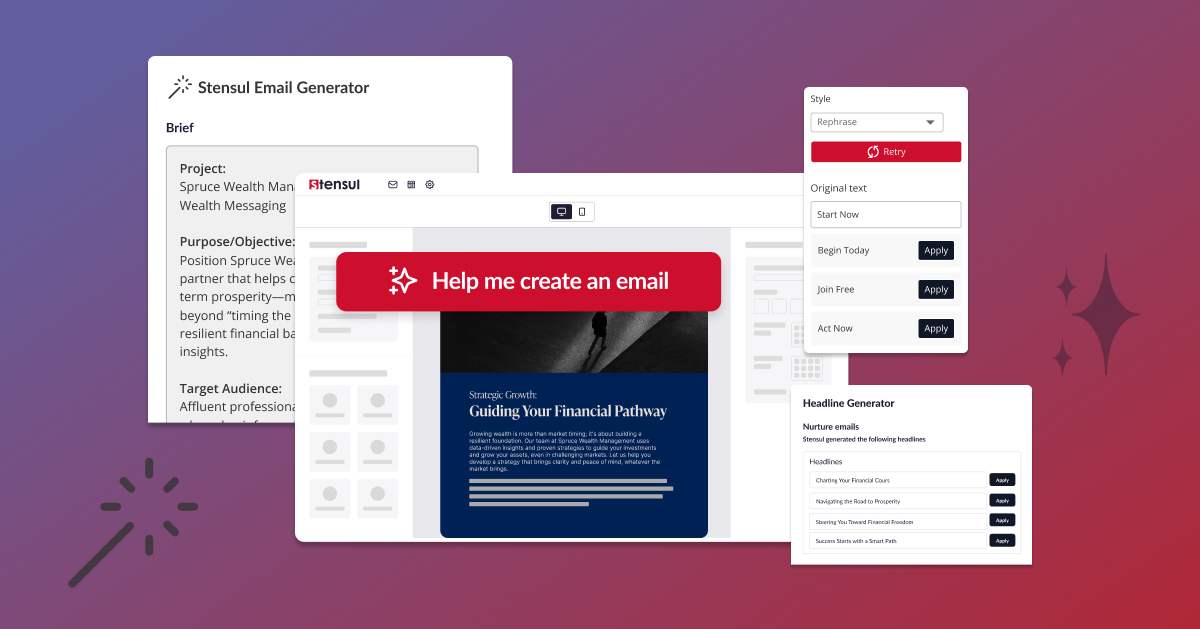Josh Storch is the senior director of email and data operations at Haymarket Media, an international media company with 14 offices worldwide. Five years ago, he came on board to create the email operations strategy and team from the ground up.
He now leads a team of four. They send more than 1,000 emails per month and maintain more than 100 data flows coming in nightly (which also acts as their customer database).
Not everyone’s had the kind of results Josh has had. Creating, then fine-tuning the operations engine has allowed him to create a unified marketing database, move all email execution in-house (significantly reducing deployment costs), and expand the role of operations to become a center for data intelligence. We caught up with him to learn about his approach.
This conversation has been lightly edited for clarity.
When you started in 2012, Haymarket didn’t have a MOPS team. What was your goal when you joined?
In the beginning, it was really about getting our processes down. A lot of it was communicating with our team’s “customers”—marketing, sales and editorial, making sure they understood the lexicon of email ops as we wanted it to be.
The whole approach has been: How can we be really rigorous about our processes and not have any ambiguity in anything? From the moment an email is requested to the moment it goes out, what is every single detail regarding communication, testing and technical aspects? If a client is involved, what is their role? Just having everything worked out from A to Z.
Haymarket is a large publisher. We have about 15 different teams, and each of them has different events and products to promote … We just have to be the one to accommodate [their needs].
What was your approach to setting up email operations?
I’m fastidious—that’s probably a good adjective for me. I’m suited to this sort of work. Initially, I didn’t need to know much about what was going on; I just needed to know how to make it perfect.
This was my ideal state: If someone requests an email, they only only need to communicate changes and an approval between the time they make that request and the time the email goes out.
No one should ever say, “I’m picking this one up.” It should be done through technology. No one should ever say, “Oh, I’m missing that question.” It should be done through formal communication in that same technology.
It was visualizing that final end state, then taking the steps to make sure we got there. We figured that out over the course of a few months.
In so many ways, if you just have the right technology, the right naming conventions and the right rules and protocols set up, you just get rid of a lot of inefficiency in that back-and-forth.
You joined Haymarket to bring email deployment in-house. How did that work out?
We were immediately able to scale the operation and started serving email requests much more quickly. At the time we had two people on the team, and we’ve since grown to five to support the 10-fold increase in email.
And as for cost savings, you definitely didn’t need to be any sort of math whiz to have figured this one out. Running deployment in-house was just so much lower than what the vendor was charging us.
Are you actually creating 1,000 emails every month?
Not from scratch. Most of it is templated.
Much of the time, a request can be as simple as—and this is where the operations really come in—when somebody files the request, they can, in seven words, tell us what they need, based on a pre-existing request of the same campaign.
Any suggestions for task management?
We use QuickBase. It’s a fairly powerful system if you have a couple programmers and a person who understand data structure.
What ESP do you use?
We use Watson Campaign Automation, formerly known as Silverpop. It’s the centerpiece of our marketing.
We’ve been very satisfied with it, and our email channel has grown dramatically while relying on this product. And we’re always looking for ways to improve. We keep a close eye on IBM’s development roadmap and also keep our eyes open for technologies that can help us achieve our goals.
How does your team approach email design?
So we don’t do any of the design ourselves. We think of ourselves as tech people, not front-end people. There are people on the team with design talent, but that’s not really what we’re meant for.
Then who calls the shots on the design of each email?
If it’s someone on the events team, for example, we’ll ask them to give us the design, or they might actually work with a designer to create a PDF. Then we’ll create that in HTML, and hopefully recycle that HTML for the length of the event’s promotion.
Other times they’ll just give us text in Microsoft Word, and then we’ll use a pre-existing template, or we’ll ask them to choose from maybe three or four existing templates.
Other teams will send the HTML out to a developer, then send the HTML to us and we don’t have to do the code ourselves. It really varies based on the team.
Have you ever tried giving marketers the ability to build emails themselves?
By and large, we keep Silverpop to ourselves. But for more technically advanced marketers with HTML experience, we’ll give them access and allow them to invent their own templates.
I like things to be uniform … I don’t like to have too many pieces of the process that are anomalous because that’s more things to memorize, and more things that could potentially go wrong.
If you could give advice to someone who either wants to go into or is doing email and data operations, what would you say?
Heed this monotony warning: For the first 5 years of my career, I probably deployed two- to three thousand emails a year. That’s a lot of emails to work on. You start dreaming in HTML.
I now spend most of my time in data management. I find it challenging and interesting, which has been the key to enjoying what I do.
As far as advice goes, if you can find marketers to champion what you’re trying to do—and this is less about being efficient and more about using email and data well—then I think you can find a lot of satisfaction in your job and people can recognize the good work you’re doing.
At a high level, what does your team of four do?
One person on my team is the data specialist. He generally spends most of his time doing day-to-day maintenance and reporting. The other three people spend more time working in emails. They field the requests and send out several hundred emails per month each.
What would you say their biggest challenge is?
When the people we work with bend the rules or stray from our protocols; which is fine—we understand we’re in a supportive role.
We have a rule about two days’ turnaround time, but there are plenty of requests coming in the day of or the day before, which can be hard. It’s the nature of the job, and you just have to be ready to occasionally handle those situations.
Has the role of MOPS evolved for your team?
What started as just a pure email operations, I’d say in the last three years has become a lot more about managing data and giving it to our marketers so they can use it effectively. Understanding our audience plus the day-to-day maintenance of it.
Thanks a lot—it’s really interesting to learn about the thought process that goes into email operations and its goals.
My goal was never to be a great marketer, but just to be as organized as I can be. I did email operations at my last job, but my title had “marketing” in it, so I thought of myself as a marketer.
Then I came to Haymarket, and there’s a real emphasis on operations. So that was my focus going in: Be excellent at delivering a product for our marketers, not being a marketer.




